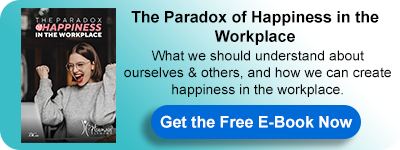Creating a Sense of Meaning and Purpose in the Workplace
After five years within the same company, Dave, a role model employee, receives an award for going the extra mile. Not only did Dave spend an additional hour, but he also sacrificed two weekends to make ends meet with a customer requirement. In addition, Dave has made some recommendations for adjusting company policy to save time and money the next time a similar incident occurs. When asked by management why did he jump all those loops and hoops, Dave’s answer was simple “it makes our company compete globally.”
The need for purpose and a sense of value and worth are two very essential human characteristics. Seligman (2012) defined “meaning” as a sense of connection and service to something larger than oneself. In the face of significant struggle or adversity, having a life purpose can help people focus on what matters most.
Stephen Covey narrates this famous story in the best seller “The 7 Habits of Highly Effective People”. President John F. Kennedy was visiting NASA. He happened to pass a janitor who was mopping the floor. The president asked him, “What are you doing?”. The Janitor’s reply was astonishing to those present. He did not say “I’m mopping the floor”, “I’m cleaning” nor did he say, “I’m doing my job”. His answer was, “I’m helping put a man on the moon.” This simple story illustrates how crucial is to have a meaning behind what one is doing.
Research shows that employees who perceive themselves as doing something meaningful always have increased levels of commitment towards their organizations. Moreover, having meaningful jobs reduces levels of turnover. On the reverse, employees who do not perceive their jobs as meaningful, tend to adopt negative behaviors such as cynicism, stubbornness, low levels of flexibility, resistance to change, and low resilience2. Therefore, meaningfulness at work provides employees with satisfaction, leading to the experience of positive emotions such as curiosity, gratitude, and inspiration. It enhances their levels of pride, towards themselves and the organization.
A sense of “meaning” reflects on positive outer organizational branding. It also brings people closer as they work together on a higher purpose. Which, in turn, reflects on openness and inclusion.
How then do we go about creating “meaning” in the workplace?
1. Help employees identify their role within the mission and vision of the company. This identification helps employees realize their roles in the big picture. Thus, understand their contribution
2. Match employees’ aspirations to the purpose of the organization. You can achieve this through openness. Talk to employees, understand them. Ask them to write down their dreams and what they wish to achieve in the workplace, then match those aspirations to the organization’s objectives
3. Conduct some exercises such as values activity. Ask employees to write down what matters most to them, what they value most in life. Such activities should help you understand what is meaningful to them, hence matching it with the organization’s purpose. Another exercise is asking them about what makes them feel motivated and involved. Building around values and motivation should help you create a meaningful experience for employees
4. Foster a growth mindset, where people learn from challenges and mistakes, hence creating a learning environment. Cultures in which people learn and build on it promote better work experiences
5. Build systems that mitigate corrosive behaviors. Work on behaviors that bring negativity into the workplace
6. Make employees feel valued by cultivating an environment that promotes high self-esteem. Employees who have good confidence, are more likely to pursue “meaning” in what they do
For more about this topic, download our latest book ” The Paradox of Happiness in the Workplace “ for FREE:

